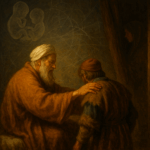
Isaac and Rebecca: Deception or Wigner’s Friend Paradox?
Synopsis The narrative of the “stolen blessings” in Parashat Toldot presents a profound moral paradox: How could Rebecca, a righteous prophetess, and Jacob, the archetype

Synopsis The narrative of the “stolen blessings” in Parashat Toldot presents a profound moral paradox: How could Rebecca, a righteous prophetess, and Jacob, the archetype
Stars, Sand… and Silence Abraham’s blessings sparkle with cosmic imagery—stars above, dust below. But when God blesses Isaac, the patriarch of gevurah, something extraordinary happens:
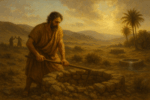
The third aliyah of Parshat Toldot presents a profound metaphor through Isaac’s well-digging enterprise. Isaac re-opens his father’s wells, stopped up by the Philistines; then

And Sarah laughed within herself, saying, “After I have become worn out, will I have ednah [renewal]?” (Genesis 18:12) Sarah’s laugh is more than skepticism—it
Zealotry and Mercy: Parallels Between Pinchas and the War in Gaza The biblical story of Phinehas (Heb. Pinḥas or Pinchas) presents a complex moral scenario

And afterwards she bore a daughter, and called her name Dinah. (Genesis 30:21) In my previous essay, “The Conflict Between Joseph And His Brothers—A Gender
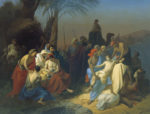
The confrontation between Joseph and his brothers is one of the most troubling stories of the Bible. Joseph and his brother—twelve sons of Jacob—were the
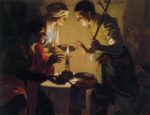
And these are the chronicles of Isaac… (Genesis 25:19) So Esau went unto Ishmael, and took unto the wives that he had Mahalath the daughter

And Rebekah spoke unto Jacob, her son, saying: “Behold, I heard thy father speak unto Esau thy brother, saying: Bring me venison, and make me
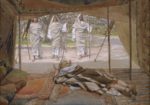
And the Lord appeared unto him in the plains of Mamre, as he sat in the entrance of the tent in the heat of the
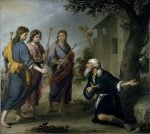
And he [Abraham] lifted up his eyes and looked, and, lo, three men stood over against him… (Genesis 18:2) On this blog, we often discuss

The blessings and the admonitions of Bechukotai (Leviticus 26:3–27:34) are viewed as the result of entanglement and disentanglement with G‑d respectively.

I grew up in Russia and was raised on the metric system based on decimal arithmetic. When we immigrated to the U.S., I had to
On Seder night we drink four cups of wine and eat three matzoth. Why four cups and not three? Why three matzoth and not four?

It is unsurprising, then, that spiritual phenomena have never been experimentally detected in a laboratory setting. Spirituality, by definition, is non-physical. Consequently, no physical laboratory
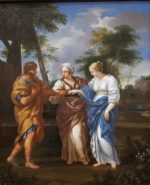
Reading the Torah, sometimes, can give a false impression of reading a story, albeit the greatest story ever written. This Divine drama involves colorful characters,

The story of entangled twins is continuing in the Torah portion Vayeitzei (Genesis 28:10–32:3.) Structurally, it is very similar to the story in the previous Torah
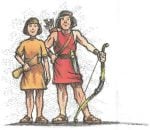
Entanglement is often called the most baffling and quintessential phenomenon in quantum mechanics. What is entanglement, in a nutshell? Two particles born from one reaction

Give me the Machpelah (double) Cave Genesis 23:9 The first legal acquisition of land in Israel takes place in this Torah portion, Chayei Sarah, when Abraham